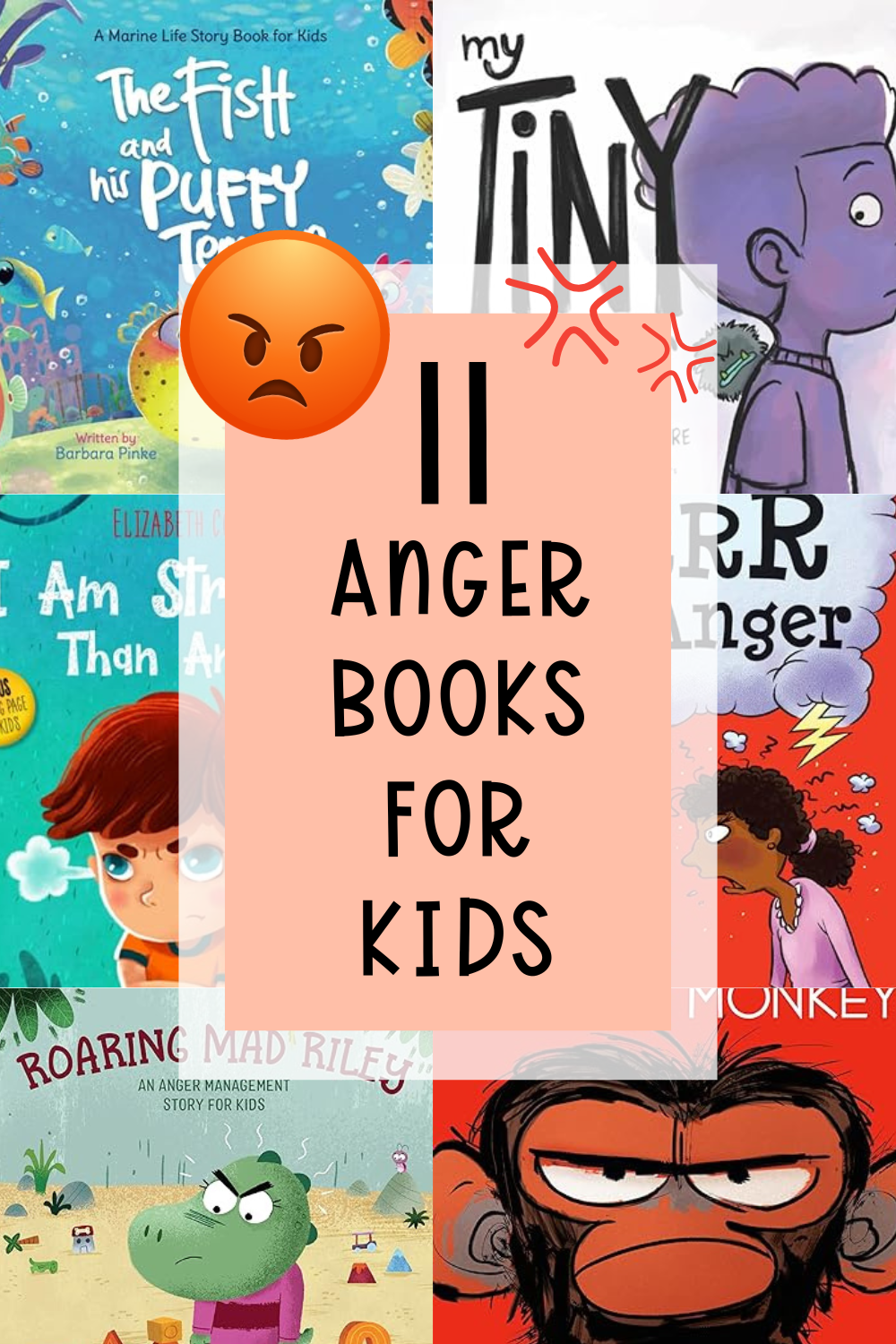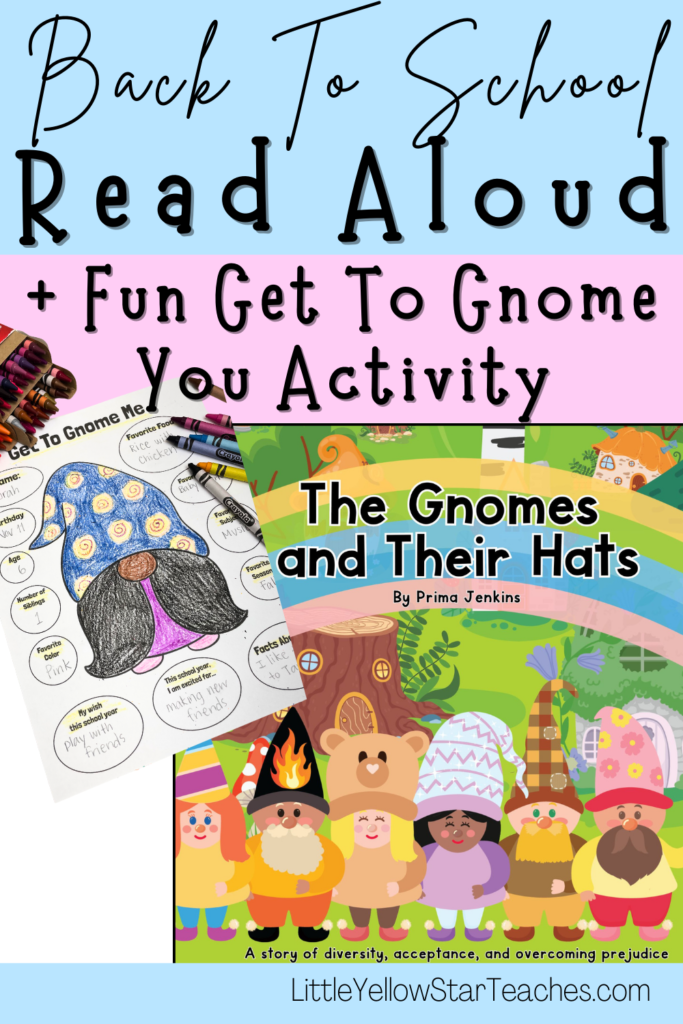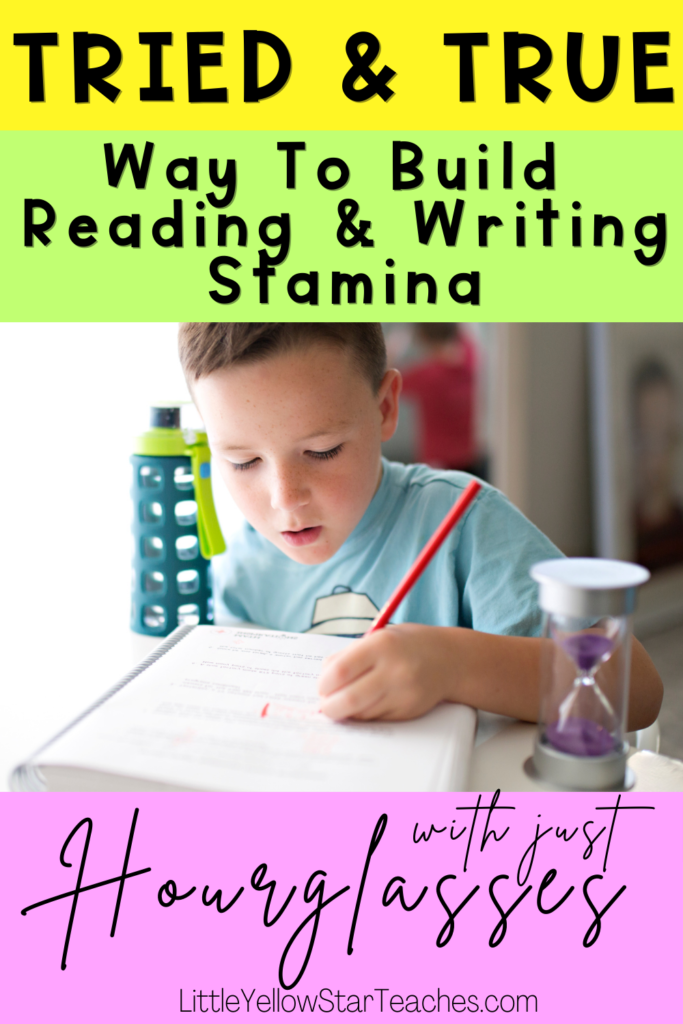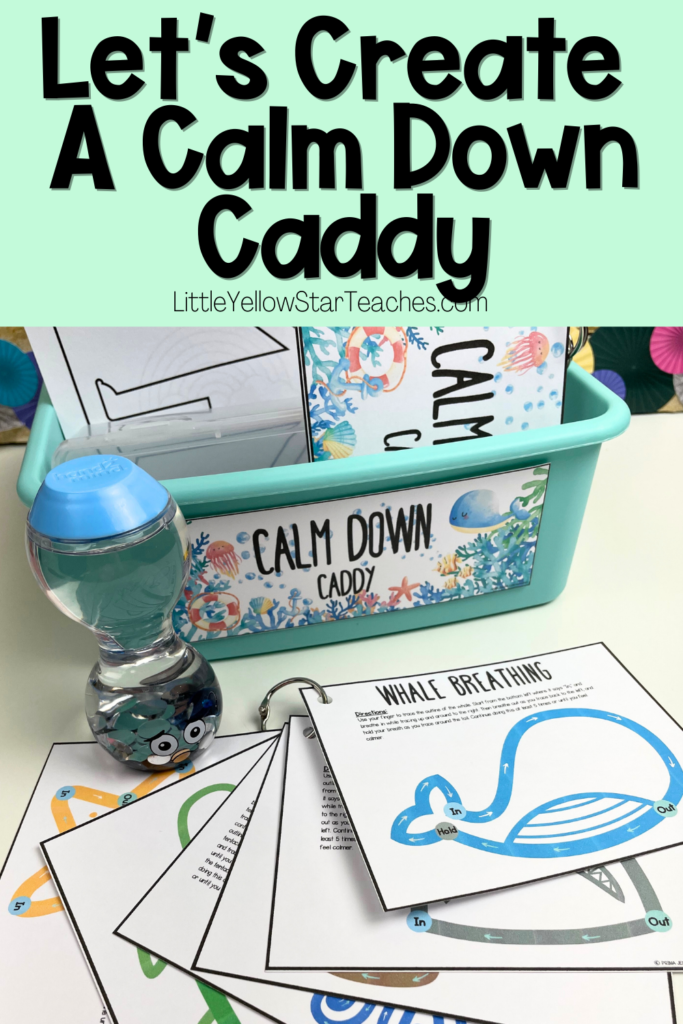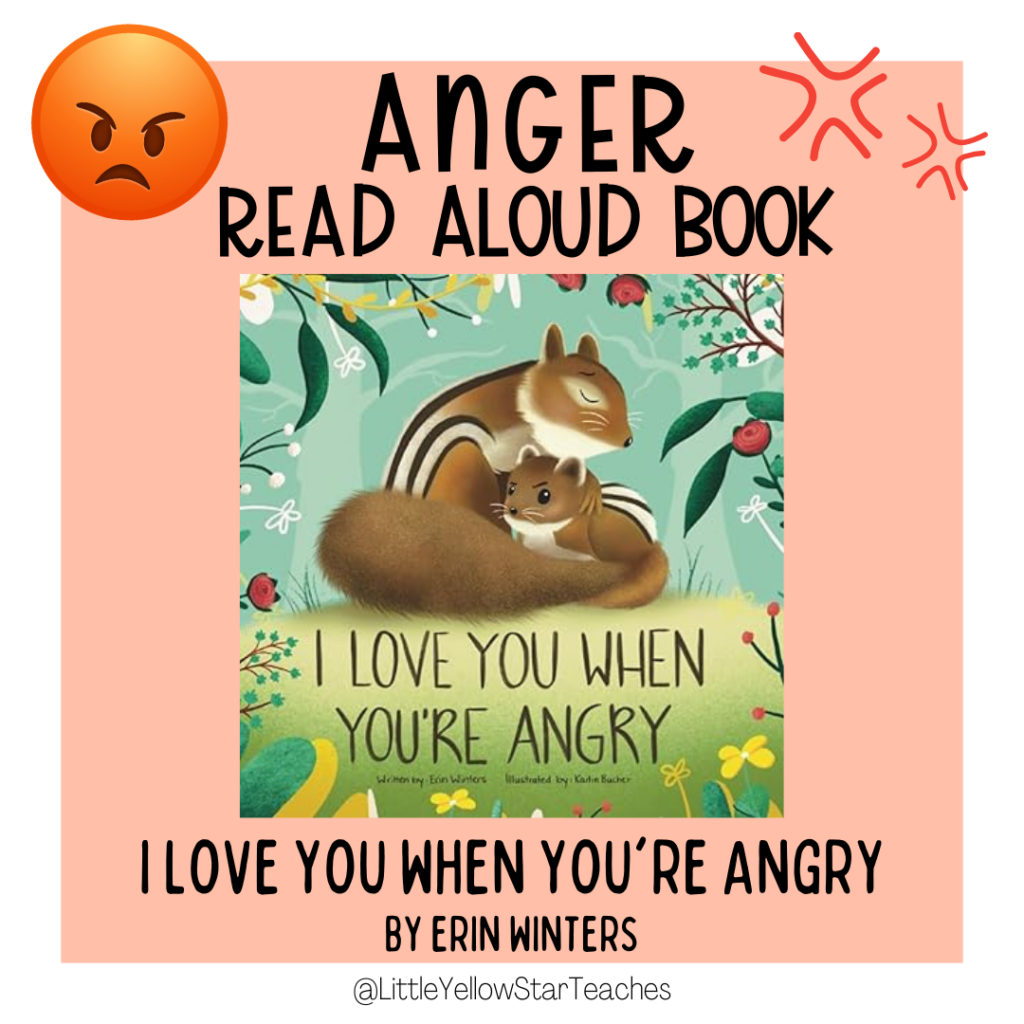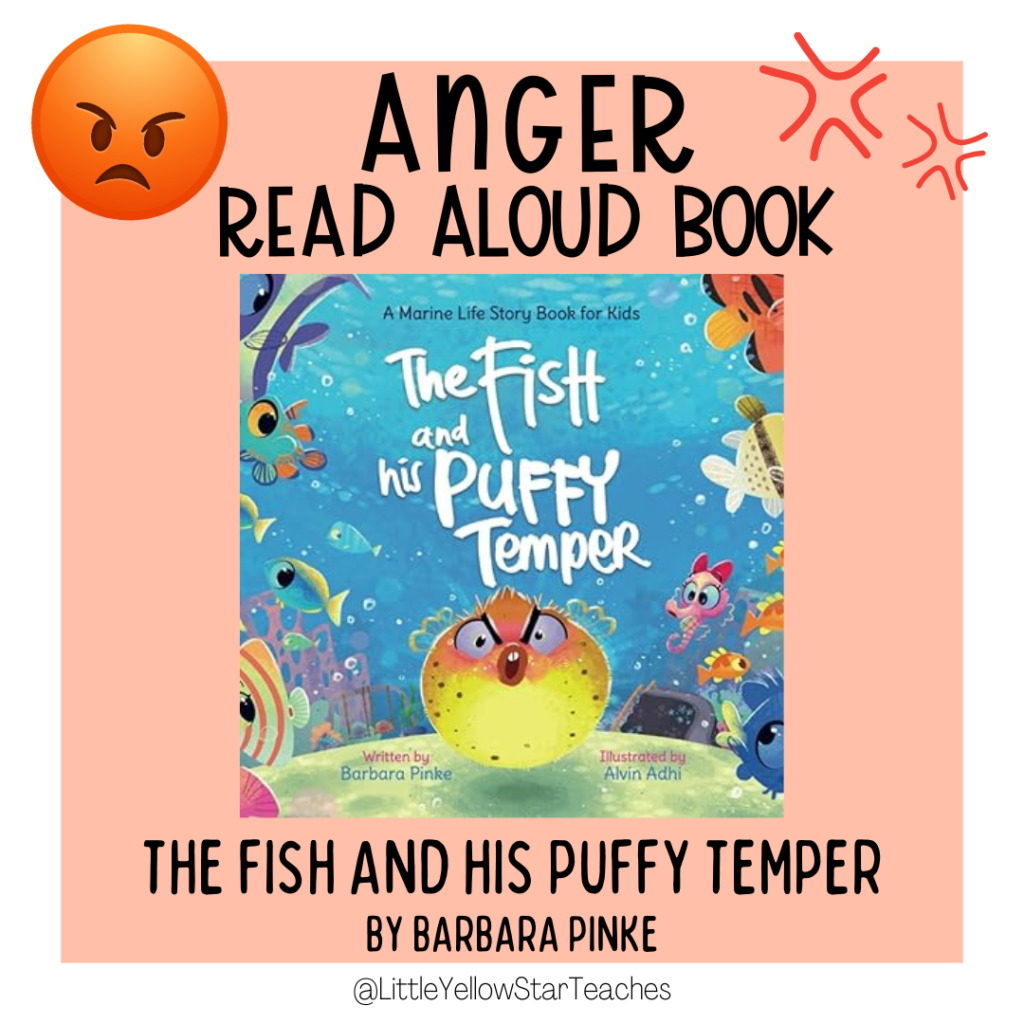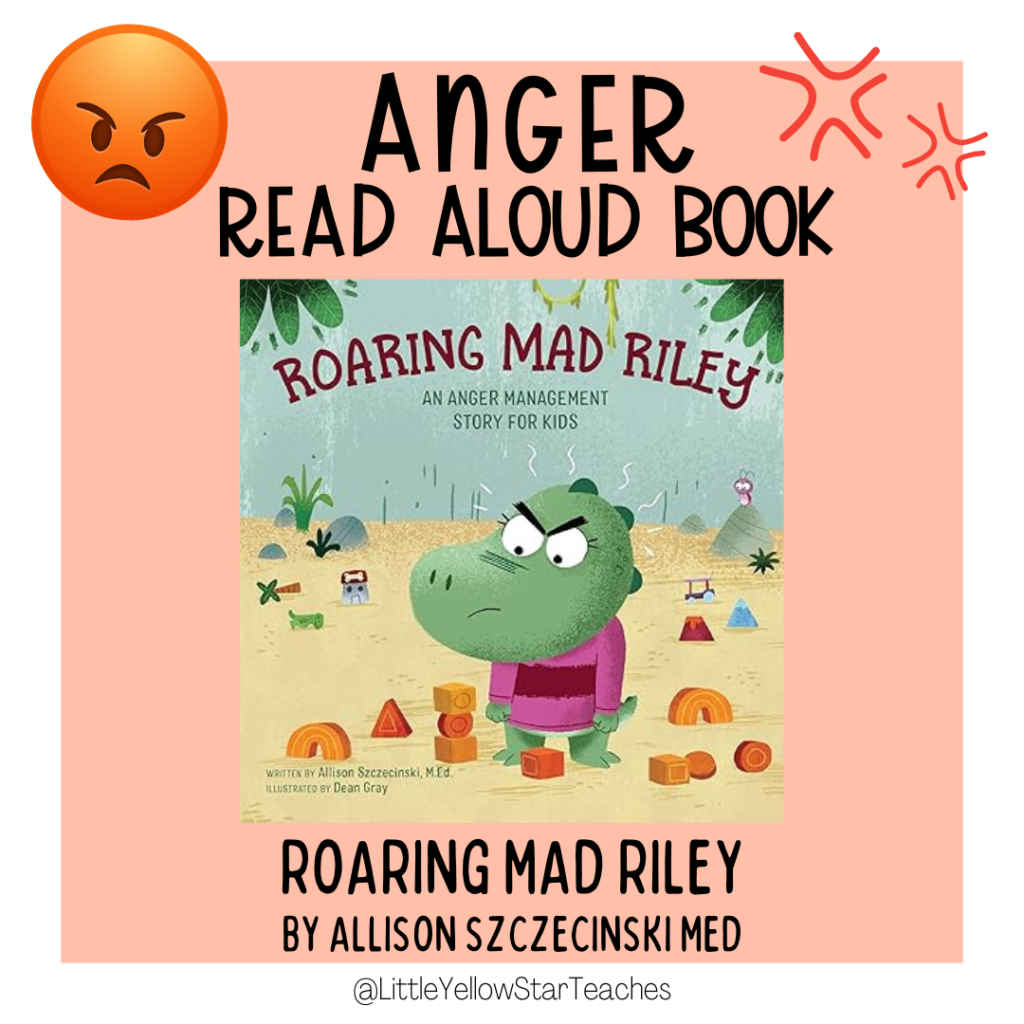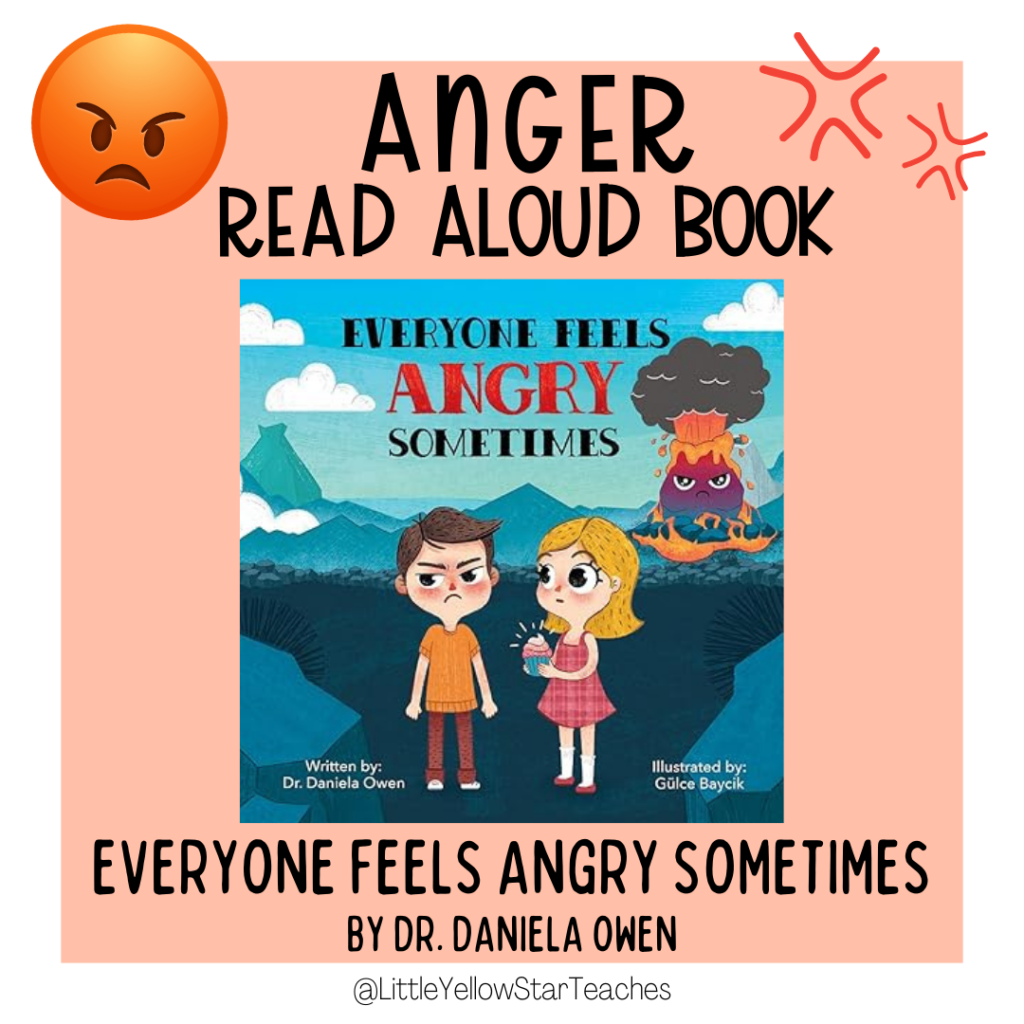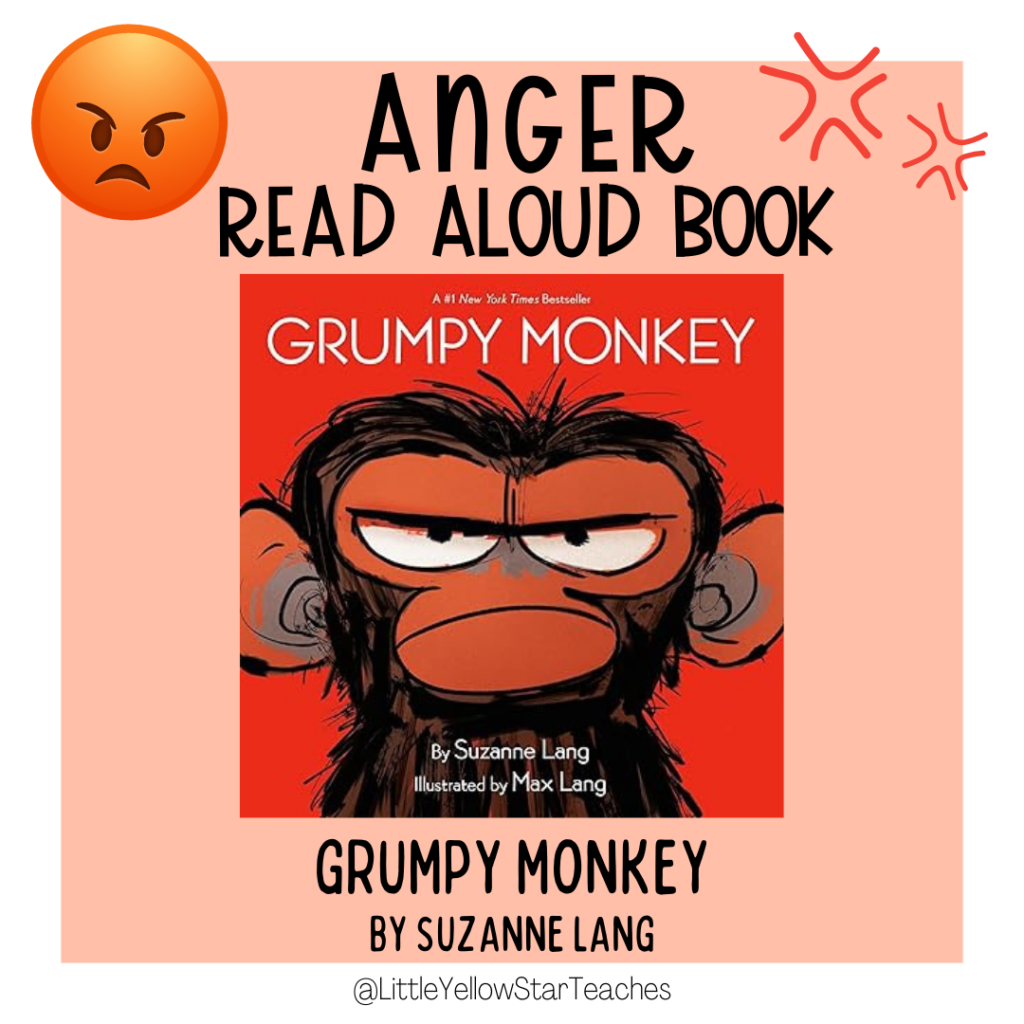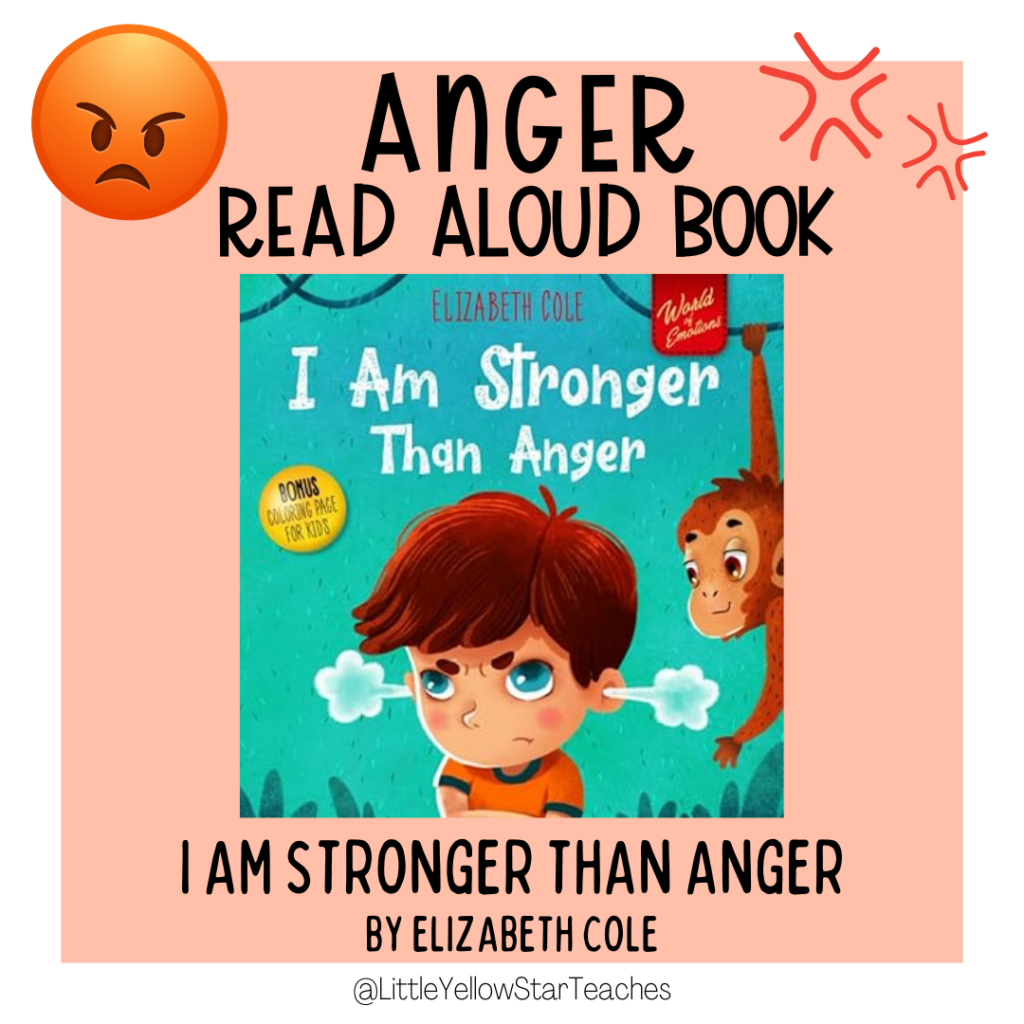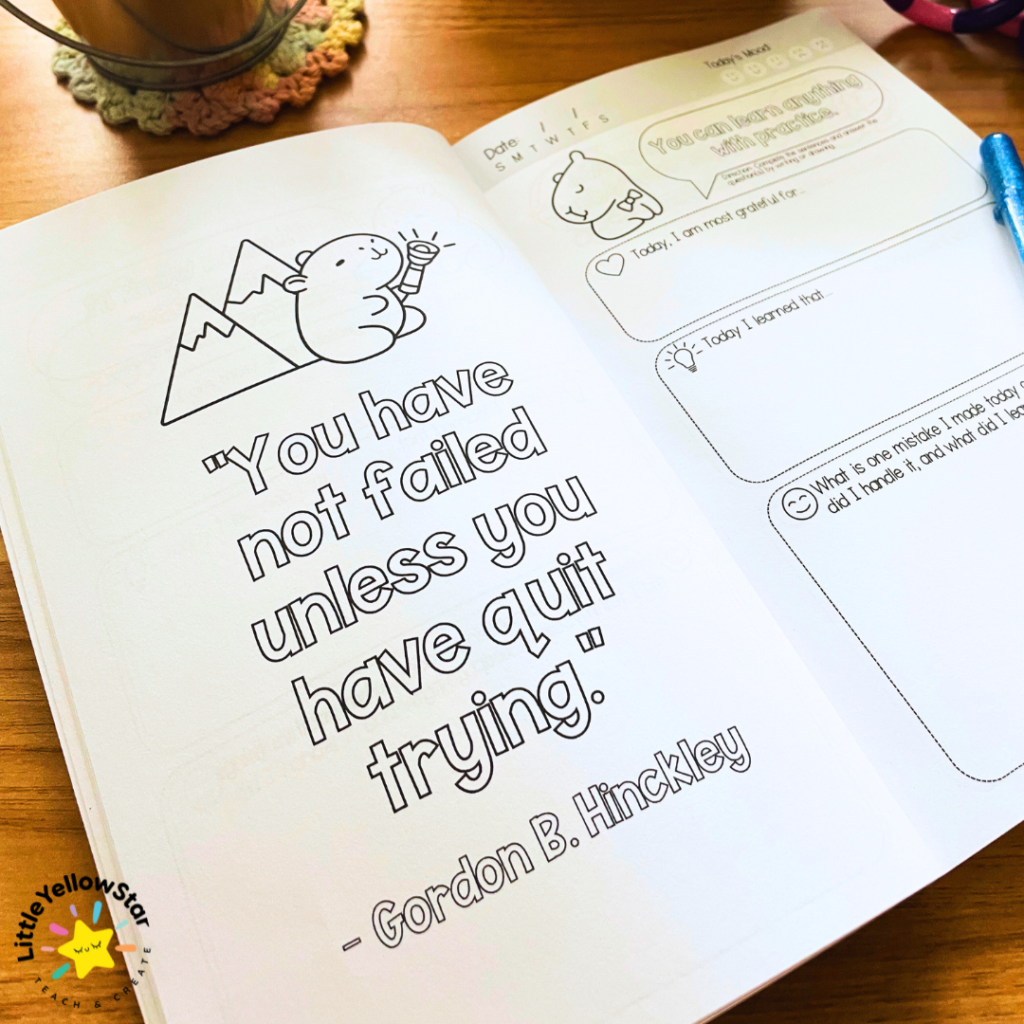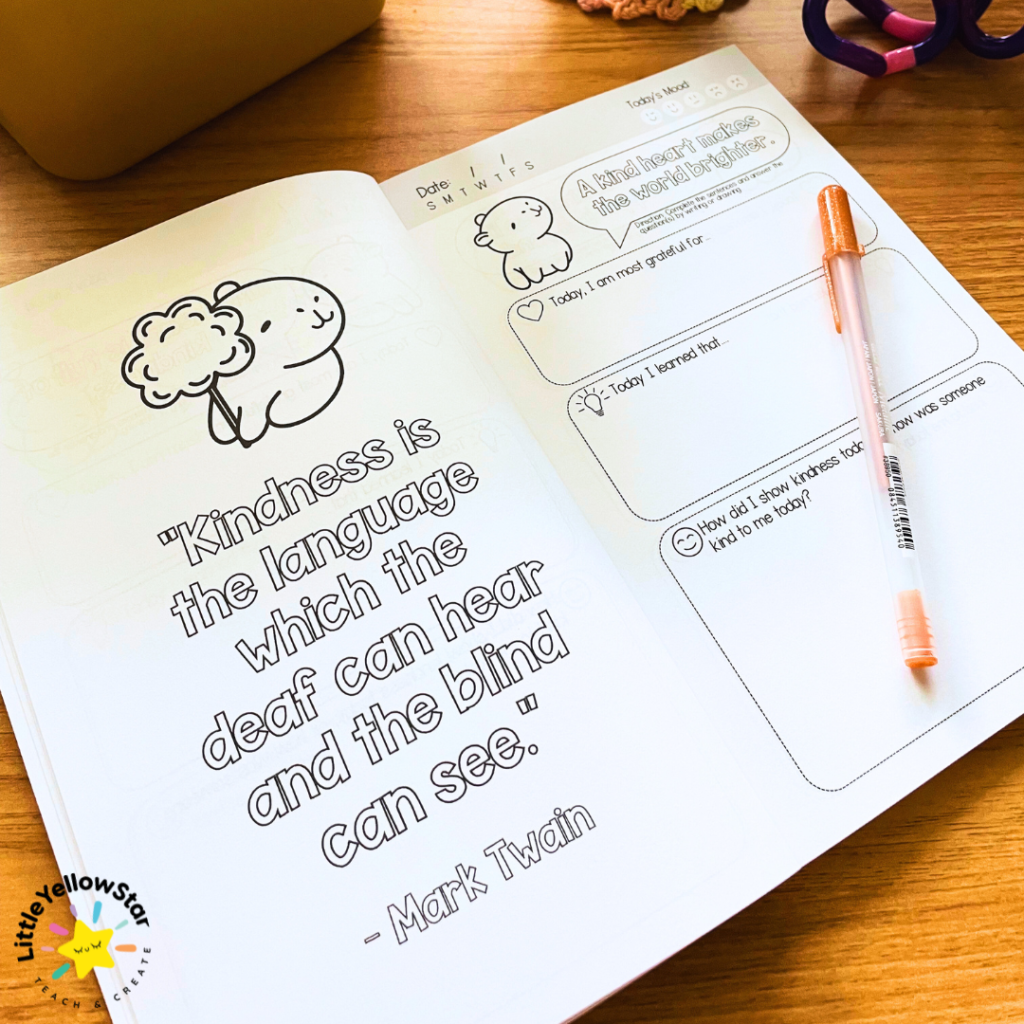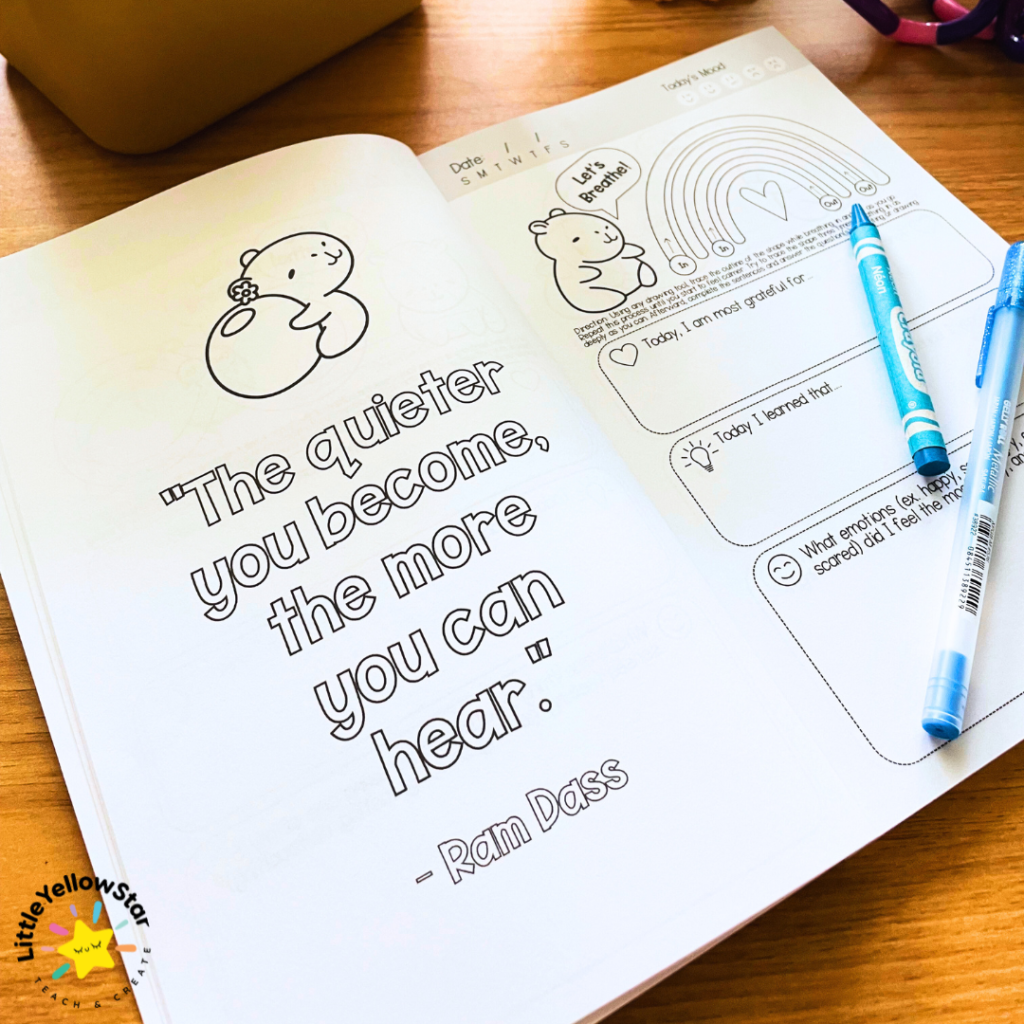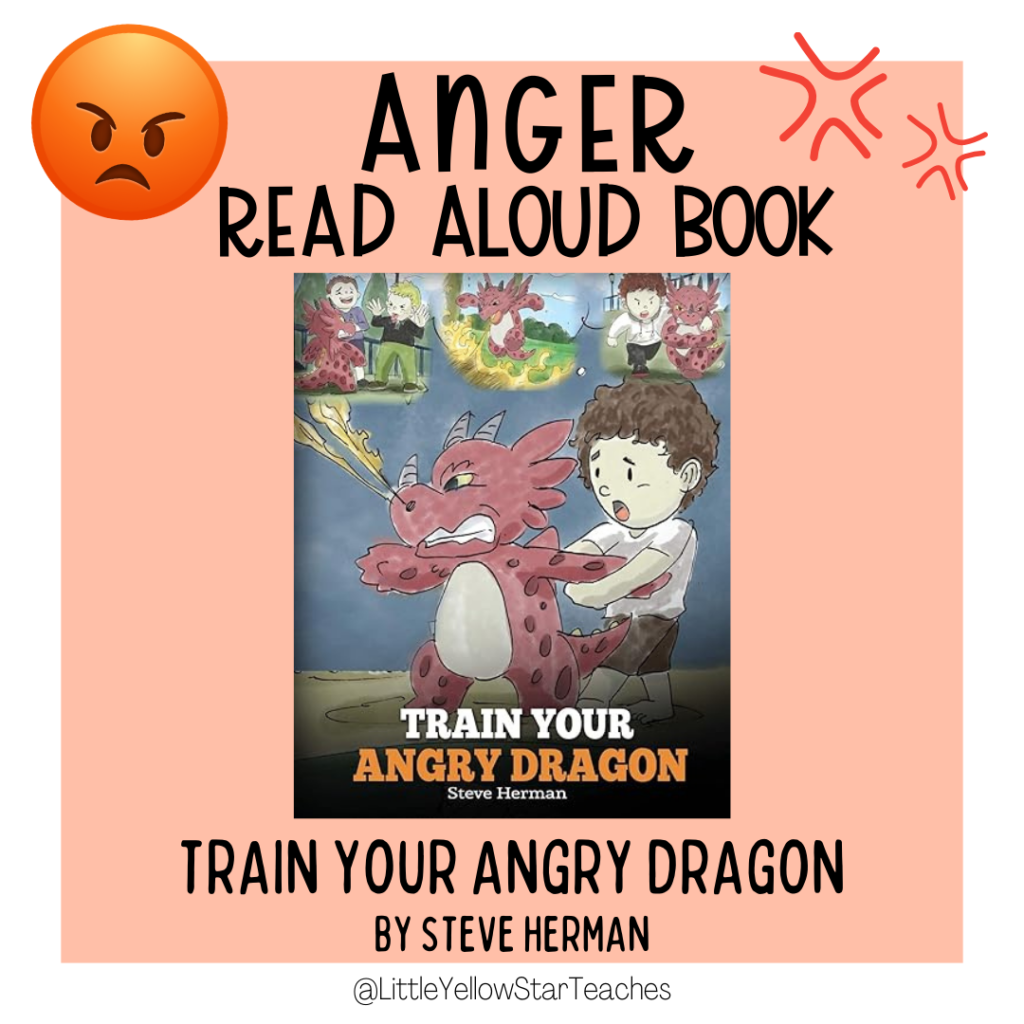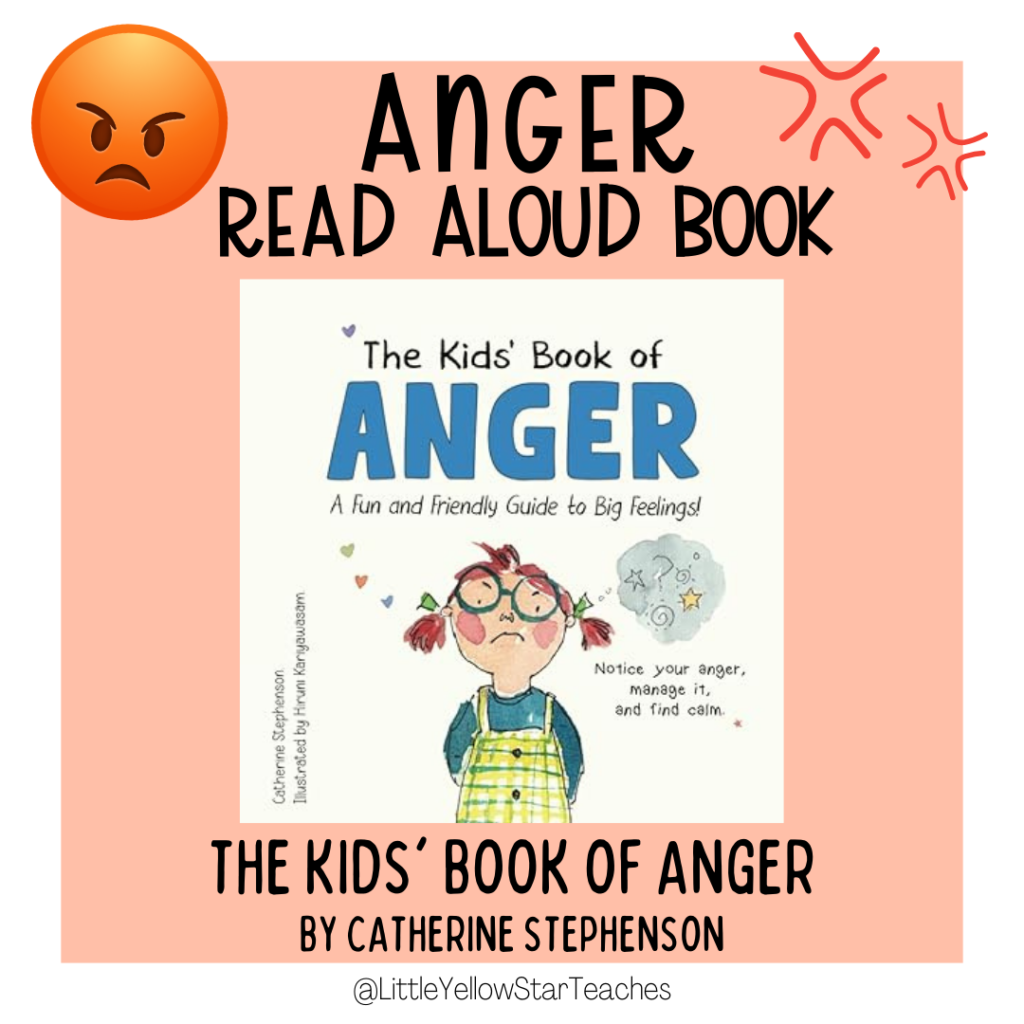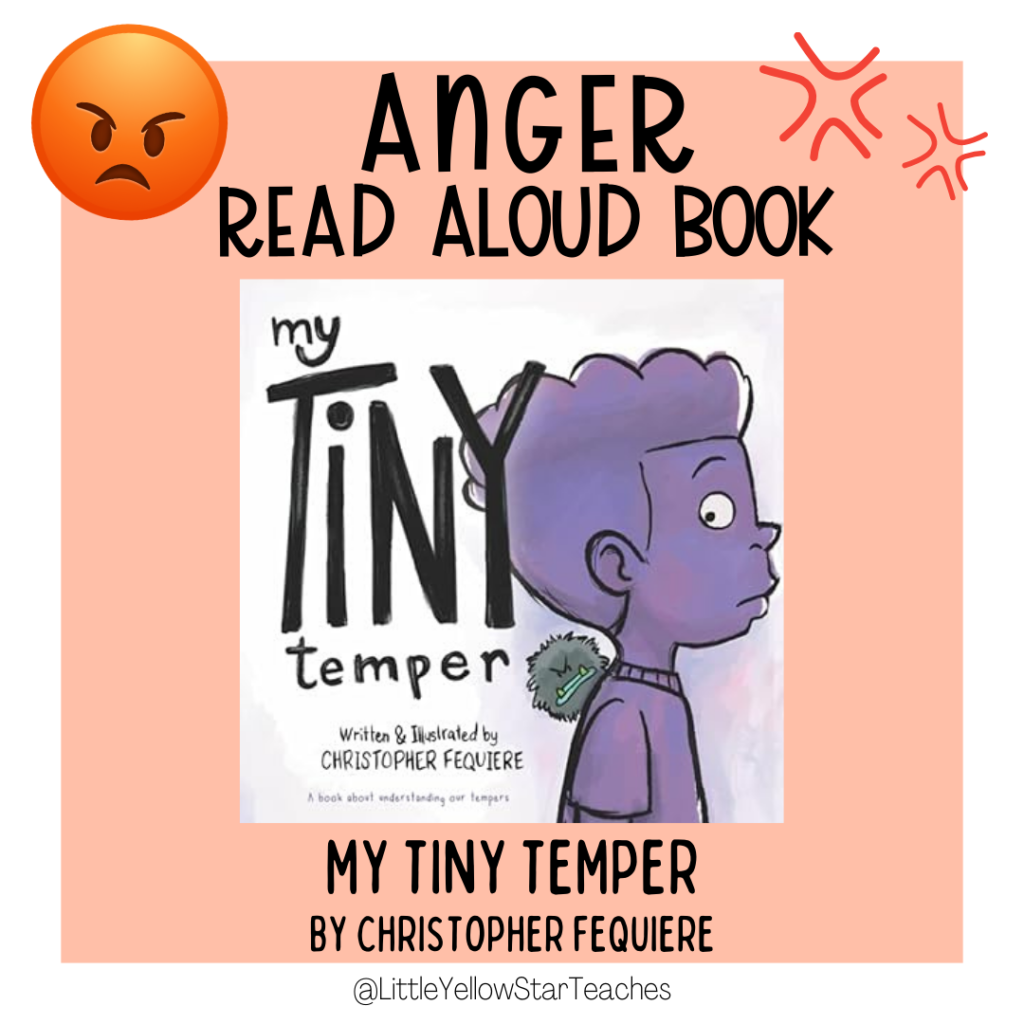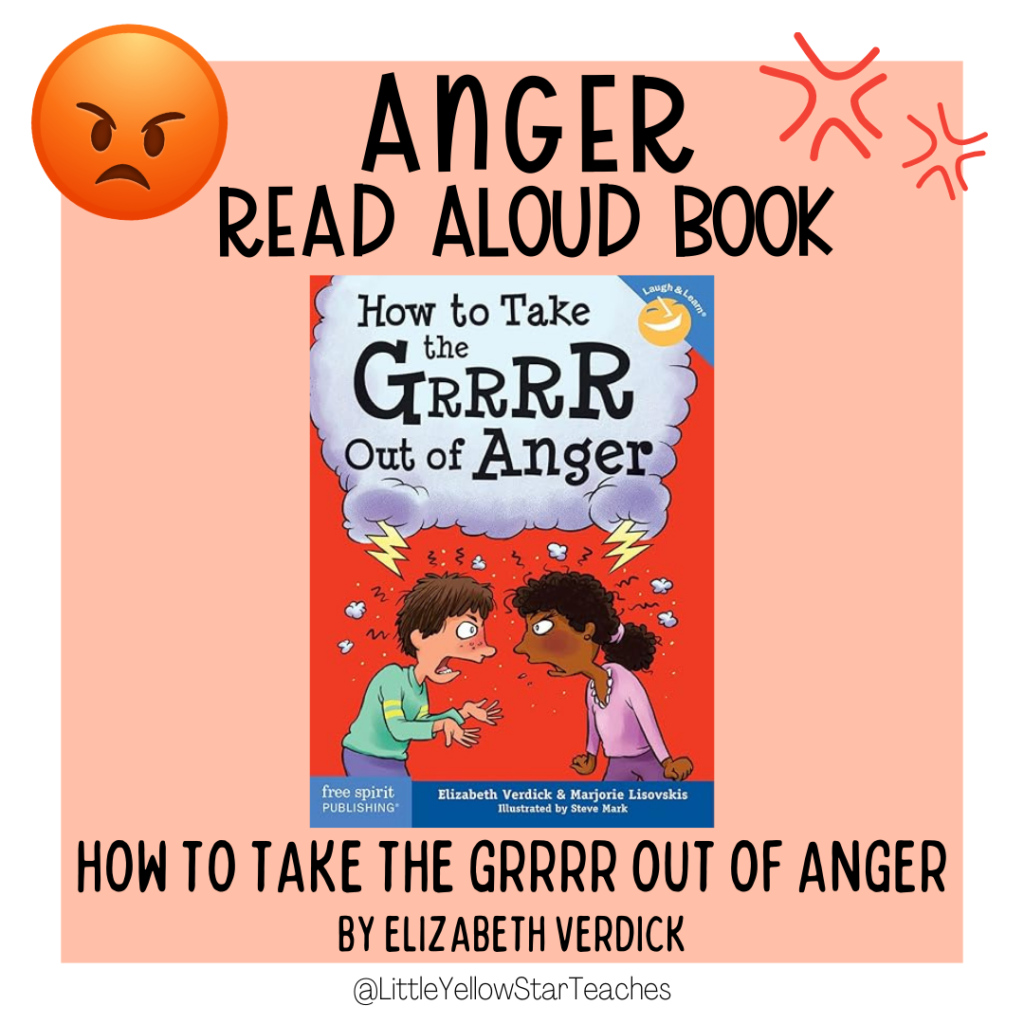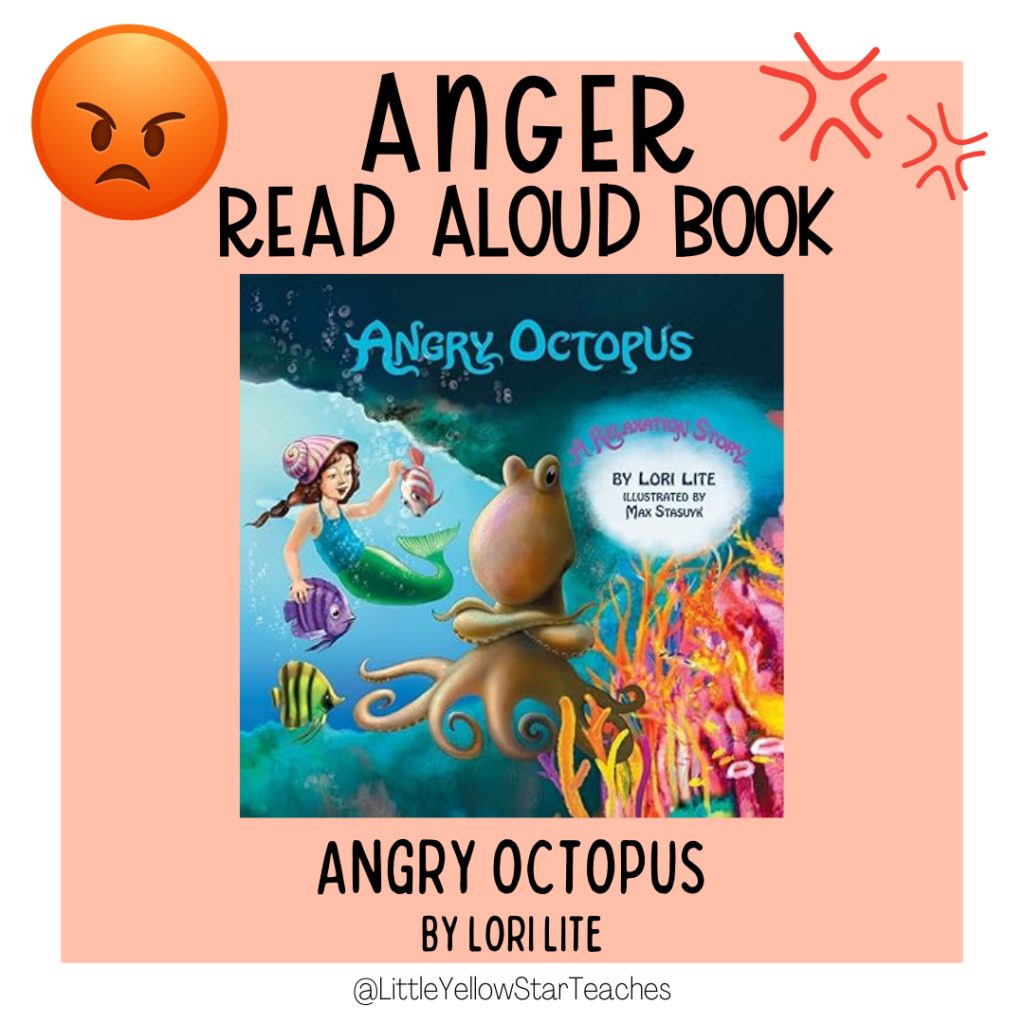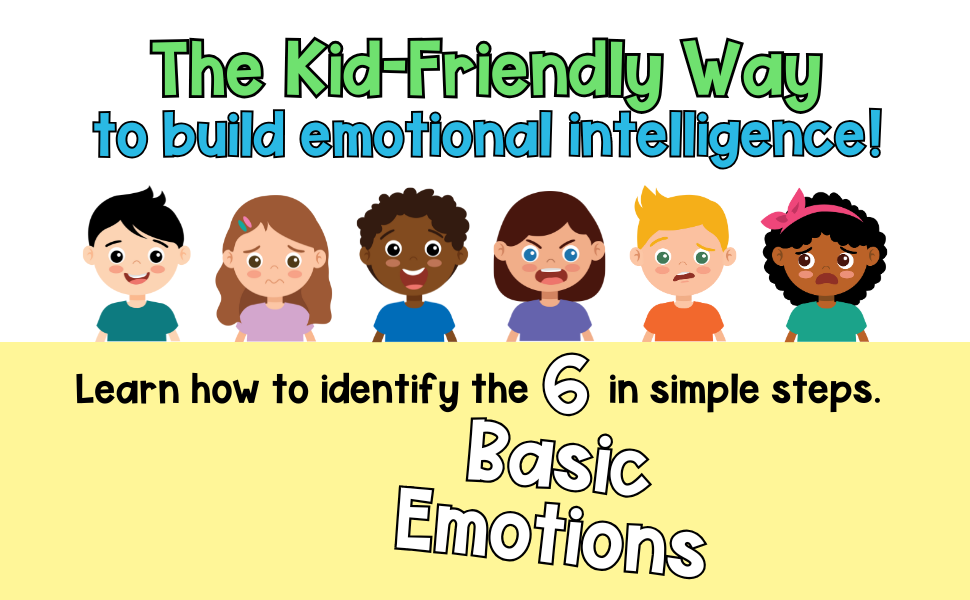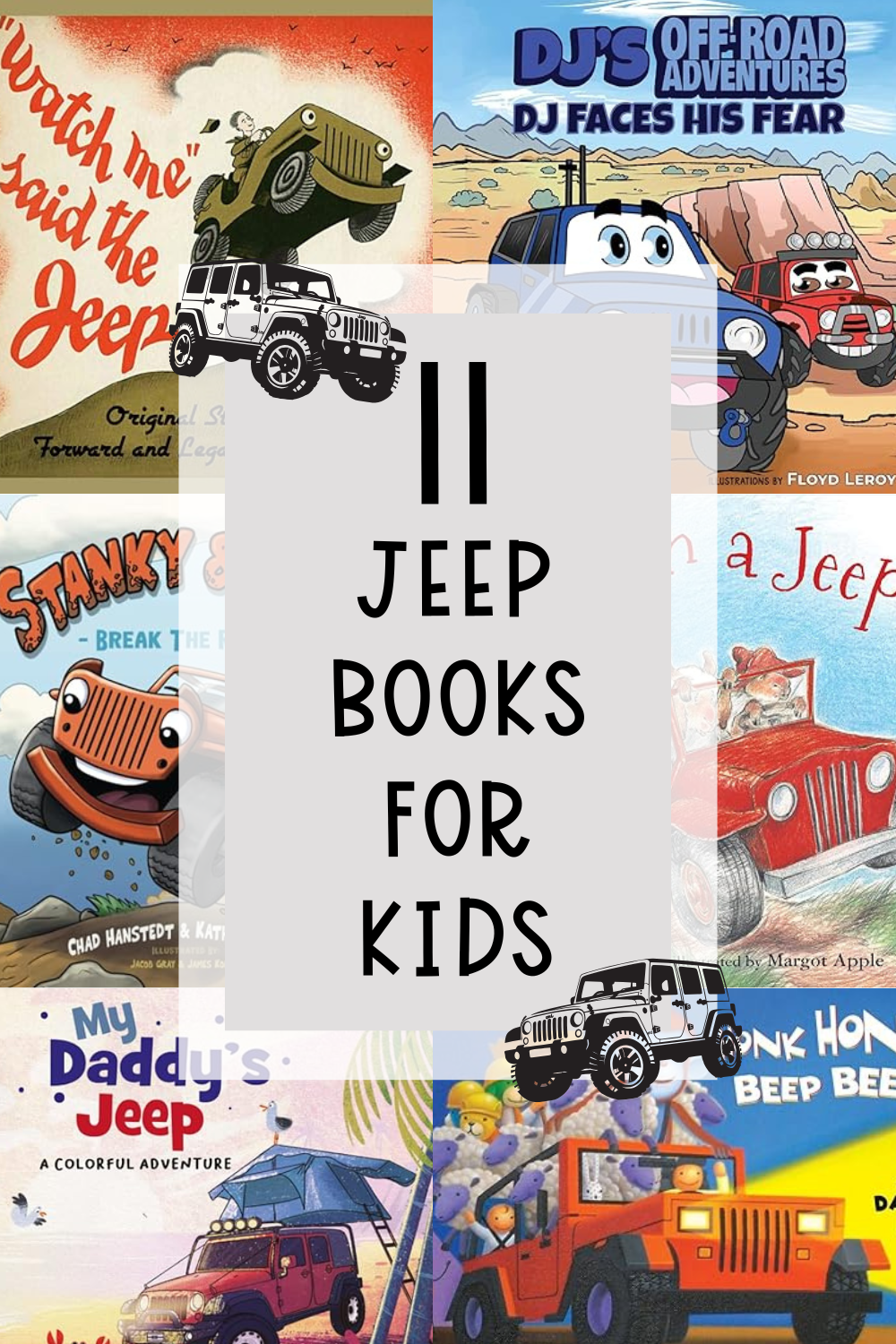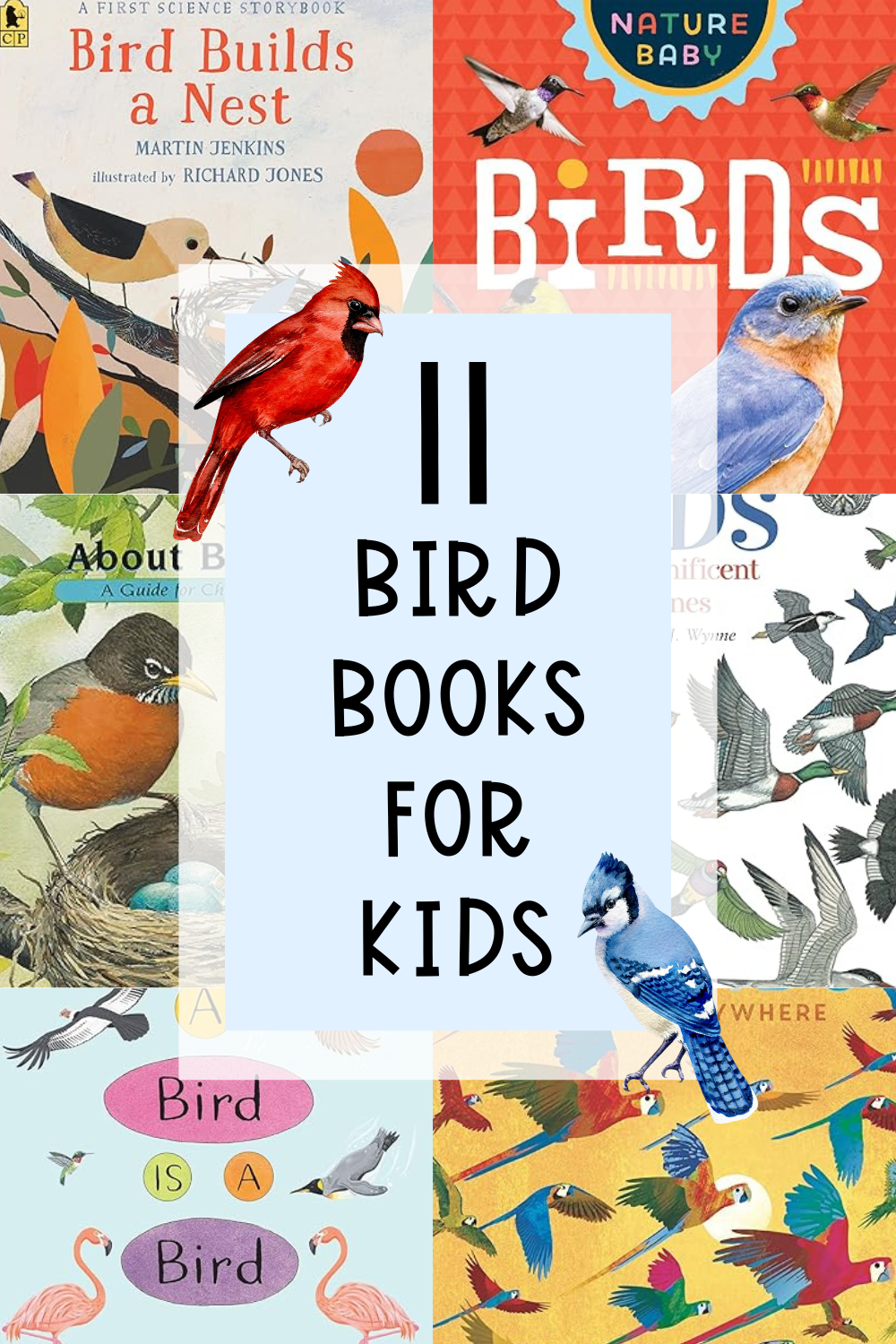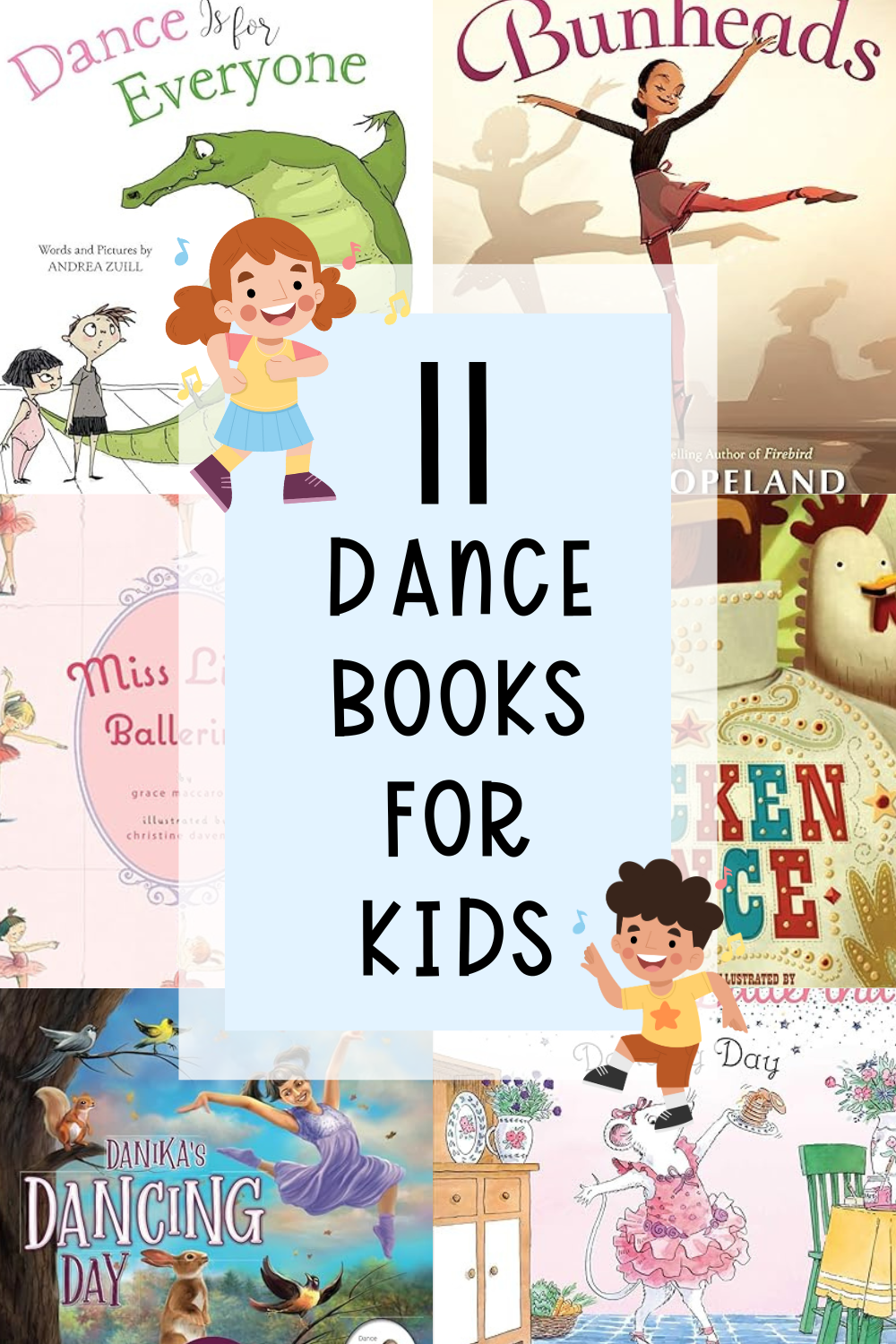Anger is a normal—and healthy—emotion, but it can feel overwhelming for kids who are still learning how to manage their feelings. Books about anger give children the language and tools to recognize, express, and work through their big emotions in positive ways.
In this post, I’m sharing my favorite anger-themed books for kids, organized by age group. I’ve also included calming activities and helpful discussion questions to support emotional growth. Let me know which book helps your child or classroom the most!
***Disclosure: This post contains an Amazon affiliate link that at no additional cost to you, I may earn a small commission when you purchase through the link from my blog. Thank you for your support!
Table of Content
- Why Read Books About Anger?
- The Role of Books in Teaching Kids about Anger
- 11 Anger Books For Children
- What Anger Book(s) Are You Going To Read Later?
Why Read Books About Anger?
Books about anger help children feel seen, understood, and supported during tough emotional moments.
Through relatable characters and gentle storytelling, kids learn that everyone feels angry sometimes—and that it’s okay. These stories model safe, kind, and effective ways to express frustration, ask for help, and calm down when things feel too big.
Reading about anger creates space for reflection, empathy, and growth, all in a safe and nurturing environment.
The Role of Books in Teaching Kids about Anger
Anger books are a great tool for building emotional intelligence and self-regulation skills.
These stories often show how anger can build up when needs go unmet or boundaries are crossed—and how it can be released through breathing, talking, or movement. Kids learn about body signals (like clenched fists or fast heartbeats), naming their emotions, and making choices about how to respond.
Books about anger also help reduce shame by normalizing this emotion and offering comforting, constructive paths forward.
How to Use Books about Anger with Children
Here are a few ways to help anger books make a lasting impact:
- 😠 Ask Open-Ended Questions: After reading, ask: Have you ever felt like the character did? or What helps you calm down when you’re mad? In class, use Turn and Talk to normalize and de-stigmatize conversations about emotions.
- 🎨 Engage in Anger-Themed Activities: Create a “calm down” toolbox together with items like stress balls, emotion cards, and breathing prompts. Draw an “anger volcano” to show what it feels like inside, or make a feelings thermometer to track emotional intensity.
- 📚 Refer Back to the Books: When a child is struggling with big emotions, revisit characters or tools from the stories. Ask: What did the character do when they were upset? What could we try right now?
- 👨👩👧 Involve Other Caregivers: Share books and strategies with families so kids get consistent support at home and school. Encourage caregivers to read the books aloud and talk openly about their own feelings, too.
11 Anger Books For Children
Younger Children (Ages 3-6)
#1 “I Love You When You’re Angry” by Erin Winters
This heartwarming rhyming book affirms over and over that a caregiver’s love is unconditional. Adorable animal illustrations and encouraging reminders help calm children’s worries, emphasizing that both good and bad days end with love.
Emphasizes unconditional love and emotional validation, helping children feel secure even when experiencing strong emotions.
Activity Suggestion: Love Notes – Write notes to each other expressing love during various moods.
Discussion Questions:
- How does the book show that love doesn’t change with emotions?
- Can you think of a time you felt angry and someone still showed you love?
- How can we show love to others when they’re feeling angry?
#2 “The Fish and His Puffy Temper” by Barbara Pinke
Puffy, a fish with a hot temper, struggles to make friends because he scares them away when he gets angry. With guidance from a patient shark, a playful seahorse, and a serene crab, Puffy learns valuable lessons on controlling his emotions and the importance of friendship.
Highlights the impact of uncontrolled anger on relationships and the value of seeking help to manage emotions.
Activity Suggestion: Calm Down Jar – Make a glitter jar to use when feeling upset.
Discussion Questions:
- What happens to Puffy when he gets angry?
- How do Puffy’s friends help him manage his temper?
- What strategies can we use to calm down when we’re upset?
#3 “Roaring Mad Riley” by Allison Szczecinski, M.Ed.
Riley, a young dinosaur, experiences intense anger when things don’t go his way. Through engaging storytelling and relatable scenarios, the book teaches children anger-management strategies, helping them understand and cope with their emotions.
Normalizes feelings of anger and provides practical tools for children to manage their emotions constructively.
Activity Suggestion: Anger Thermometer – Create a visual tool to identify levels of anger.
Discussion Questions:
- What triggers Riley’s anger in the story?
- How does Riley learn to handle his emotions?
- What are some ways you calm down when you’re upset?
Lower Elementary Children (Ages 7-9)
#4 “Everyone Feels Angry Sometimes” by Dr. Daniela Owen
This book teaches mindfulness techniques to help children recognize and manage their anger before it escalates. It provides practical tools to navigate strong emotions and encourages children to remain calm and positive during distressing times.
Emphasizes that anger is a normal emotion and introduces mindfulness as a method to manage it effectively.
Activity Suggestion: Mindfulness Practice – Engage in simple meditation exercises.
Discussion Questions:
- What are some signs that you’re starting to feel angry?
- How can mindfulness help manage anger?
- What new strategies did you learn from the book?
#5 “Grumpy Monkey” by Suzanne Lang
Jim the chimpanzee is in a terrible mood for no good reason. His friends try to cheer him up, but Jim insists he’s not grumpy. The story explores the importance of acknowledging feelings and understanding that it’s okay to have bad days.
Encourages emotional awareness and acceptance, teaching children that all feelings are valid.
Activity Suggestion: Mood Chart – Track daily emotions and discuss them.
Discussion Questions:
- Why do you think Jim felt grumpy?
- How did his friends react to his mood?
- What can we do when we feel grumpy?
#6 “I Am Stronger Than Anger” by Elizabeth Cole
This engaging story follows Nick, a young boy who becomes upset when he can’t have a koala. Through interactions with various zoo animals, Nick learns practical techniques to manage his anger, such as deep breathing and counting to ten. The book combines charming illustrations with rhyming text to teach children that they have the power to control their emotions.
Emphasizes that anger is a natural emotion but can be managed through self-awareness and coping strategies.
Activity Suggestion: Calm-Down Techniques – Practice the strategies Nick learns, such as deep breathing and counting.
Discussion Questions:
- What situations make you feel angry, and how do you usually respond?
- Which animal’s advice did you find most helpful, and why?
- How can you apply the techniques from the book in real-life situations?
Check Out Capybara-Theme Daily Reflection Journals For Kids!
#7 “Train Your Angry Dragon” by Steve Herman
In this delightful tale, a young boy teaches his pet dragon how to manage anger and frustration. Through humorous situations and vivid illustrations, children learn that even dragons can benefit from patience and self-control.
Highlights the importance of understanding and managing emotions, demonstrating that everyone can learn to handle anger constructively.
Activity Suggestion: Create Your Own Dragon – Draw and name a dragon, then discuss how it handles emotions.
Discussion Questions:
- What triggers the dragon’s anger, and how does he learn to cope?
- Why is it important to manage our emotions, even when we’re very upset?
- What strategies from the book can you use when you’re frustrated?
Upper Elementary Children (Ages 9-11)
#8 “The Kids’ Book of Anger” by Catherine Stephenson
This informative guide helps children understand anger and provides practical strategies to manage it. Through relatable examples and engaging activities, kids learn to recognize their feelings and develop healthy coping mechanisms.
Encourages self-awareness and emotional intelligence, teaching children that it’s okay to feel angry but important to handle it appropriately.
Activity Suggestion: Emotion Diary – Keep a journal to track feelings and triggers.
Discussion Questions:
- How can understanding your anger help you manage it better?
- What strategies from the book do you find most helpful?
- Why is it important to express anger in a healthy way?
#9 “My Tiny Temper” by Christopher Fequiere
This story follows a young boy whose tiny temper grows larger each time he doesn’t get his way. As the temper grows, it becomes harder to manage, teaching readers about the importance of recognizing and addressing anger early.
Demonstrates how unchecked anger can escalate and the value of self-regulation.
Activity Suggestion: Draw Your Temper – Illustrate what your “tiny temper” looks like and discuss ways to keep it small.
Discussion Questions:
- What causes the boy’s temper to grow, and how does it affect him?
- Why is it important to address anger before it becomes overwhelming?
- How can you help others manage their tempers?
#10 “How to Take the Grrrr Out of Anger” by Elizabeth Verdick
This comprehensive guide offers children practical advice on understanding and managing anger. It includes tips on recognizing anger triggers, calming techniques, and ways to express feelings constructively.
Promotes emotional literacy and provides tools for children to handle anger in healthy ways.
Activity Suggestion: Relaxation Techniques – Practice methods like deep breathing or visualization.
Discussion Questions:
- What are some common triggers for anger, and how can you avoid them?
- What calming techniques work best for you?
- How can you support friends who are feeling angry?
#11 “Angry Octopus” by Lori Lite
In this relaxation story, an angry octopus learns to calm down using deep breathing and muscle relaxation techniques. The book introduces children to mindfulness practices to manage anger and stress.
Teaches children the value of mindfulness and relaxation in managing emotions.
Activity Suggestion: Guided Relaxation – Lead children through the relaxation techniques described in the book.
Discussion Questions:
- How does the octopus learn to manage his anger?
- What relaxation techniques can you use when feeling upset?
- How can you incorporate these techniques into your daily routine?
What Anger Book(s) Are You Going To Read Later?
Anger books for kids offer a safe, loving way to talk about hard feelings. With the right stories, kids feel empowered—not ashamed—of their emotions, and gain tools that will help them now and into the future.
Which book are you reading to support emotional growth? Tag me on Instagram @LittleYellowStarTeaches and share your favorite reads, calming activities, or SEL lessons inspired by these powerful stories!
Happy reading!
Prima at LittleYellowStar
* * *

